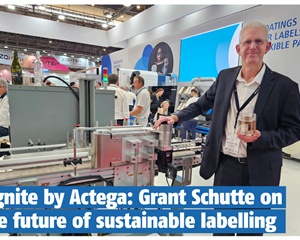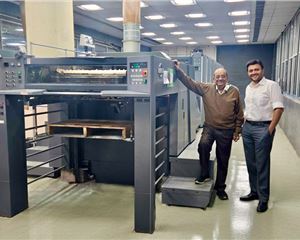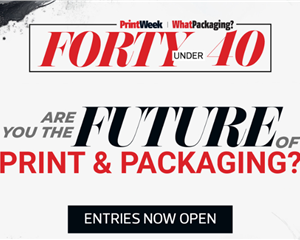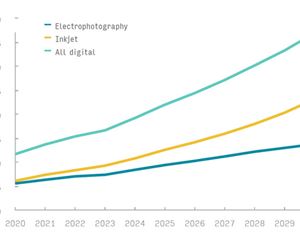Tejaswini Patil: Scaling up through technology, teamwork, and consumer trust
Winning the Packaging Person of the Year award, Tejaswini Dhanaji Patil, a doctoral researcher at IIT, Roorkee, has developed biodegradable packaging materials from millets.
30 Sep 2025 | By PrintWeek Team
Q: What do you see as the biggest hurdle in adopting these sustainable, millet-based packaging solutions across the food industry, and how do you plan to overcome it?
Tejaswini Patil (TP): The main challenge is recognition and scalability—balancing industry adoption, consumer perception, and cost. Millets are climate-resilient but underutilised; transforming them into functional packaging demands a steady raw material supply, economical processing, and compliance with food safety standards. My strategy is to work with industry entrepreneurs and farmer cooperatives to build a supply chain and to educate consumers and align millet packaging with India’s plastic-ban policies and global climate goals. My strategy blends politics, research, and public awareness to make millet-based packaging widely available, reasonably priced, and effective.
Q: Your millet-based drinking straws are a remarkable innovation. How do you envision these edible straws impacting consumer behaviour and the broader perception of sustainable packaging?
TP: Millet-based edible straws are a behavioural push that makes sustainability noticeable, palpable, and pleasurable in day-to-day living than just a replacement for plastic. When people can eat a straw or watch it biodegrade, it turns sustainability into a personal act. On a larger scale, these straws can shift perceptions of packaging from “waste” to a meaningful part of the dining experience. They merge nutrition, culture, and climate-conscious living, making eco-friendly choices feel like an upgrade rather than a compromise.
Q: You emphasise collaboration with academics and industry to encourage the adoption of eco-friendly packaging. Can you share an example of a successful collaboration with practical applications?
TP: A key academic collaboration was with Prof. Kirtiraj Gaikwad, whose guidance on crosslinking, mechanical strength, and water resistance transformed barnyard millet straws from a creative concept into a viable product. Working with his team of chemical engineering and food science students provided the experimental validation needed for future industry acceptance.
Q: Your work supports various Sustainable Development Goals (SDGs). Which specific SDG does your research on millet-based packaging contribute?
TP: Although my study supports several SDGs, SDG 12: Responsible Consumption and Production is the one it most strongly supports. Edible straws made from millet provide a safe, practical, and biodegradable substitute for single-use plastic straws, therefore addressing the urgent need to minimise their usage. At the same time, it encourages the use of underutilised climate-resilient crops like millets, supporting sustainable agricultural methods and resource-efficient production.
Q: With your research gaining both local and international recognition, how do you plan to scale up the production and achieve global impact, especially among GenZ and millennials?
TP: Through a mix of technology and teamwork, I want to collaborate with startups and industry partners to set up pilot-scale manufacturing facilities that can reduce costs and make the films and straws profitable. I also intend to use industry-academia partnerships to modify these materials for various regional food systems. I see a great opportunity to present edible packaging as a lifestyle option for GenZ and millennials, who are very open to innovation and are very concerned about sustainability.
One tech trick you wish to share?
Using edible gums as natural binders and film-forming agents in conjunction with crosslinking agents like organic acids is a useful technological technique for the packaging sector. This method produces high-performance, environmentally friendly packaging free of artificial chemicals.
If you could time-travel inside a book?
I would enter the universe of George Washington Carver’s biography, Ek Hota Carver. This book, which my father gave me when I was ten years old, had a profound effect on me. It is exciting to read about Carver’s journey from being born at the end of American slavery, being an orphan at a young age, and becoming a well-known agronomist and educator.
One factory you visit that has wowed you?
The Amul dairy plant in Gujarat — their large-scale integration of automation, quality control, and sustainability astounded me. It showed me that even eco-friendly technologies.
One product you wish was designed better?
The plastic cup and food container lids are one item I had seen that got me thinking about why it hasn’t been better developed. They produce a lot of plastic trash, are single-use, and cannot be recycled. Based on my research on millet-based edible packaging and biopolymers, I see a definite chance to create edible or biodegradable lids that preserve functionality while having a smaller environmental effect.
How did you celebrate your win?
When I won the Packaging Person Award, I immediately went to my PhD supervisor, who has played a big part in my accomplishment, to convey the news. His warm comments and support made the occasion even more wonderful, and later I celebrated with my family and close friends.












 See All
See All